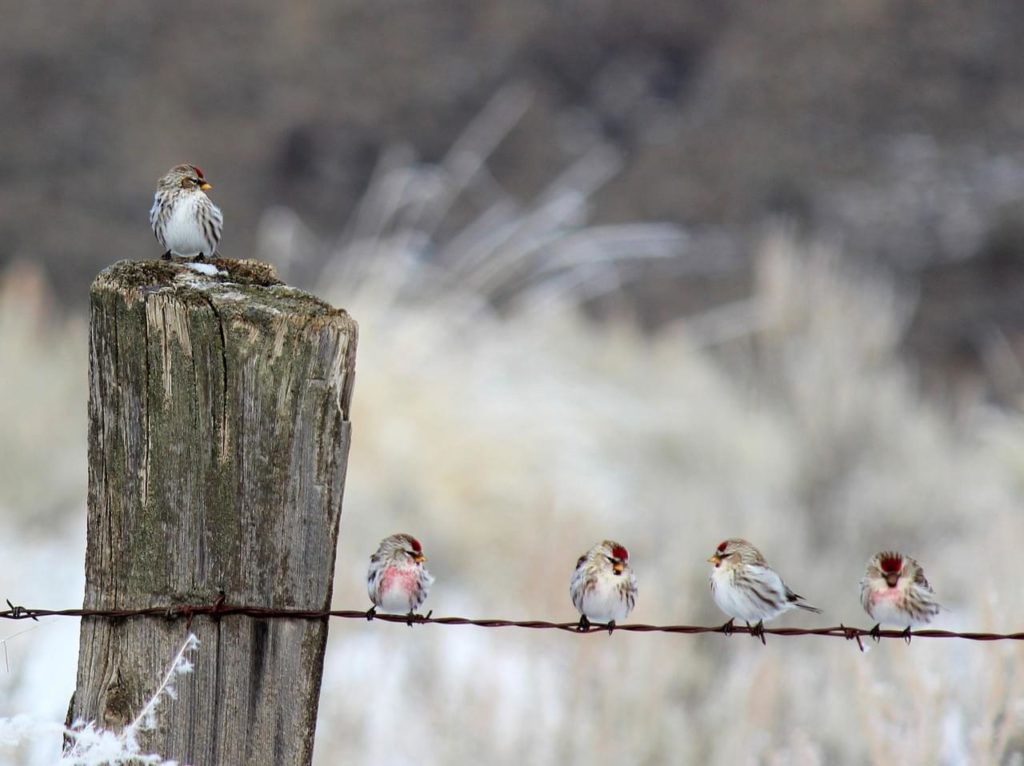by Doug Becker

Ok, winter is here and there are snowstorms running across the country. Do you have your feeders full? This is the time of year our backyard birds could use a little help. Well, maybe with one exception, and that would be my favorite little finch, the Common Redpoll. These guys live and breed in the far north, as far north as the Arctic Circle. Redpolls are known as an irruptive migrant. This means they only migrate into the United States when seed availability is low every couple of years. So, keep an eye out at your feeder on these snowy days, and you may be surprised to find an entire flock of bright red-capped Redpolls visiting your feeder and showing off against the white snow.



The Common Redpolls’ territory covers all of Canada and Alaska as well as the shores of Greenland. It’s said that any country that reaches the Arctic Circle will be home to the Redpoll. Every few years these little finches will migrate south into the entire northern half of the U.S. Their interest is only in finding seed to eat. Cold weather is not an issue. Banding records show that some Common Redpolls have an extra wide range. For example, a Redpoll banded in Michigan was later discovered in Siberia. Some banded birds from Alaska have been recovered in the eastern U.S., and a banded Redpoll from Belgium was found two years later in China. Even though we feel lucky to find a small flock of these small finches at our feeder every few years, their worldwide numbers are estimated in the tens of millions.
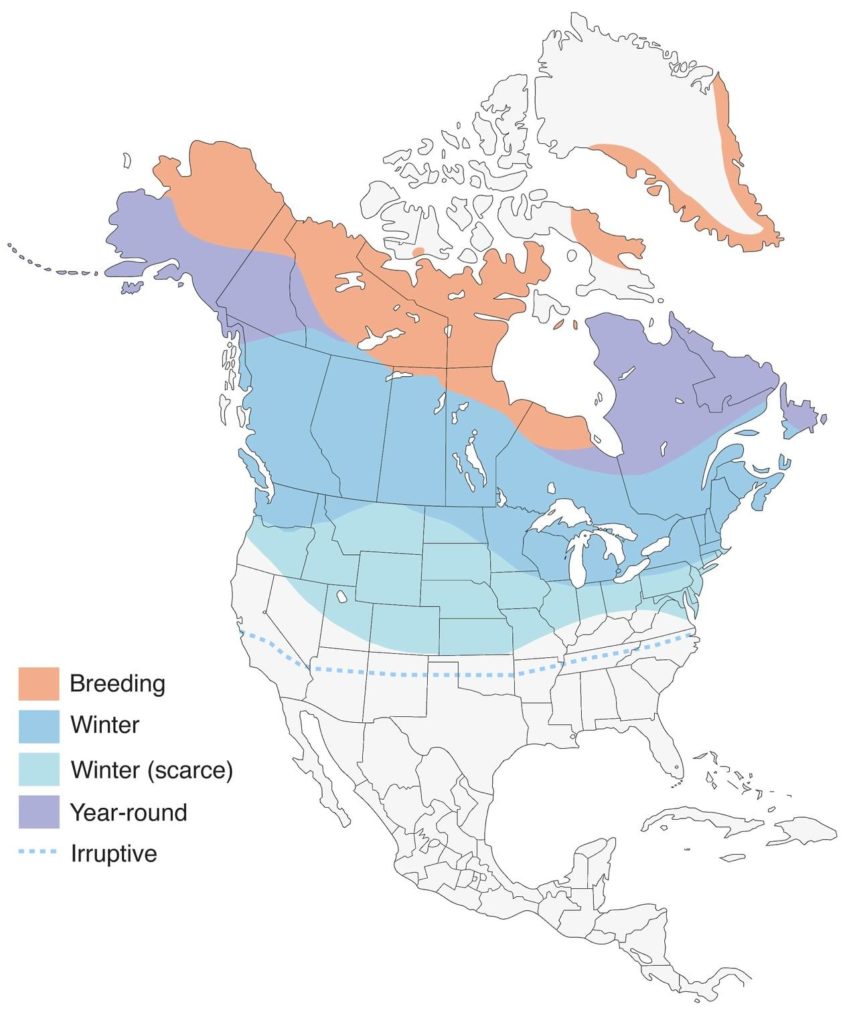

Redpolls are seed eaters. Their tiny bills make them tiny-seed foragers. At your feeder, they will eat the cracked seed on the ground left by other birds, and millet, thistle, or Nyjer seed will keep their attention. Winter diet is mostly seeds from birch, alder, spruce and pine trees. The Redpoll also feeds in grasses, sedges, and will forage in wild flowers. Summer diet includes lots of spiders and insects. Remember, a flock of Common Redpolls at your feeder will be in perpetual motion as these busy guys never sit still. Listen for their sharp buzzy call notes and energetic trills and chatters. If you haven’t seen Redpolls at your feeder in the winter before, you will love your first experience.


Home is where the heart is. No matter what Redpolls find on their periodic migrations to the south, the cold tundra of the far north always calls them home. The female usually selects the nesting site and builds the nest. Nesting sites are common on low-to-the-ground, thin, horizontal branches of willows, alders, or spruce, otherwise, right on the tundra’s rocky ledges or other low ground cover works well. Nest construction begins with small twigs for foundation support. Then the nest is made of grasses, little twigs, roots and tree moss. The nest is lined with a thick layer of whatever soft and warm materials are at hand. Typically, ptarmigan or grouse feathers, lemming fur, wool, hair, or downy plant material is used. The completed nest will measure about 4 inches across with a cup being 2.5 inches in diameter, and 2 inches deep. These small finches are quite prolific with up to 3 broods per year, and clutches of up to 7 eggs. Incubation is 11 days, and nesting time before Mom lets her chicks out to the cold is just 9 -16 days. It’s fascinating how these tiny finches flourish in such adverse and vulnerable conditions.
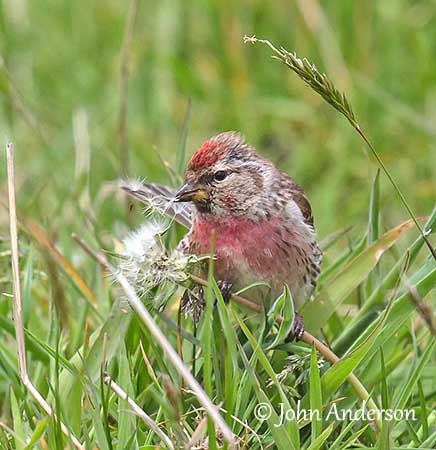
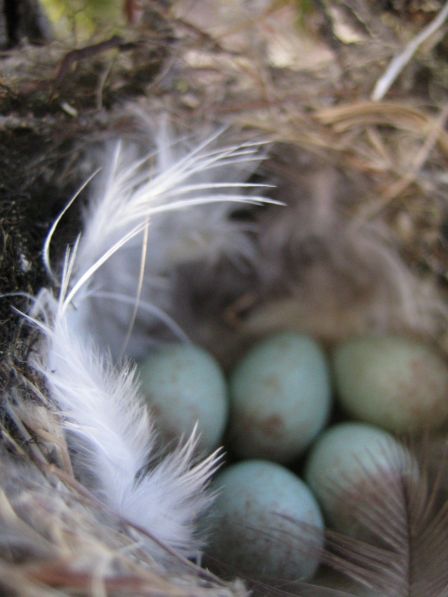
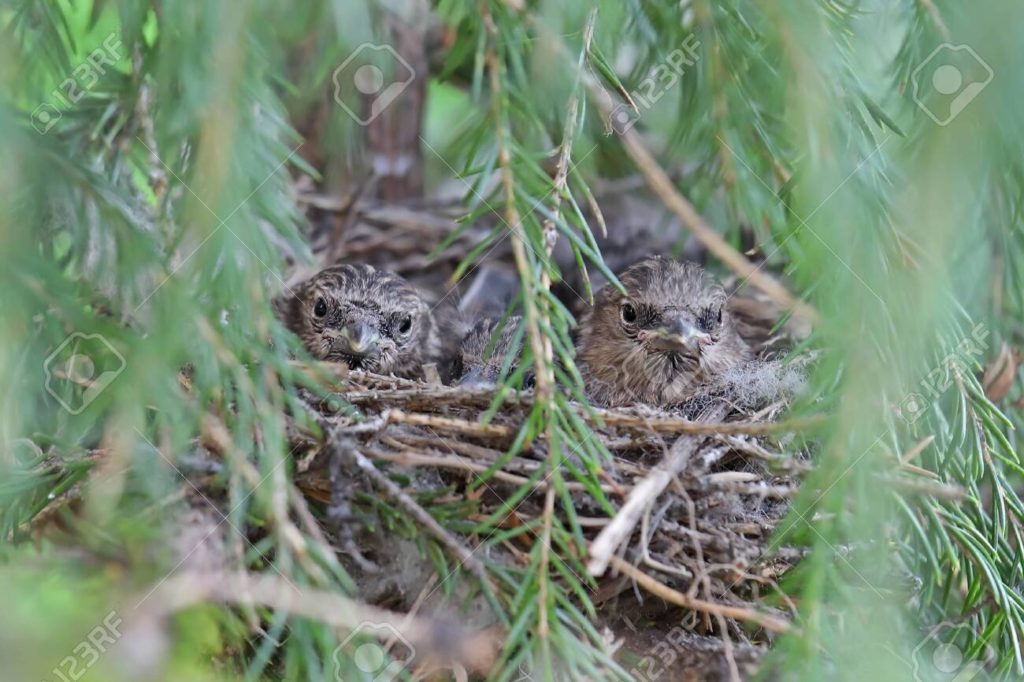
Yep! Common Redpolls number in the tens of millions worldwide, but they are only at our snowy backyard feeders every few years. Their arrival will be unannounced, but their bright red-caps, red-striped breasts and perpetual busy movement will alert you to something different in the backyard. As you do your regular winter birding, keep in mind that those House Finches and Purple Finches are not Redpolls. You’ll know the Common Redpolls when you see them. See ya out there!
